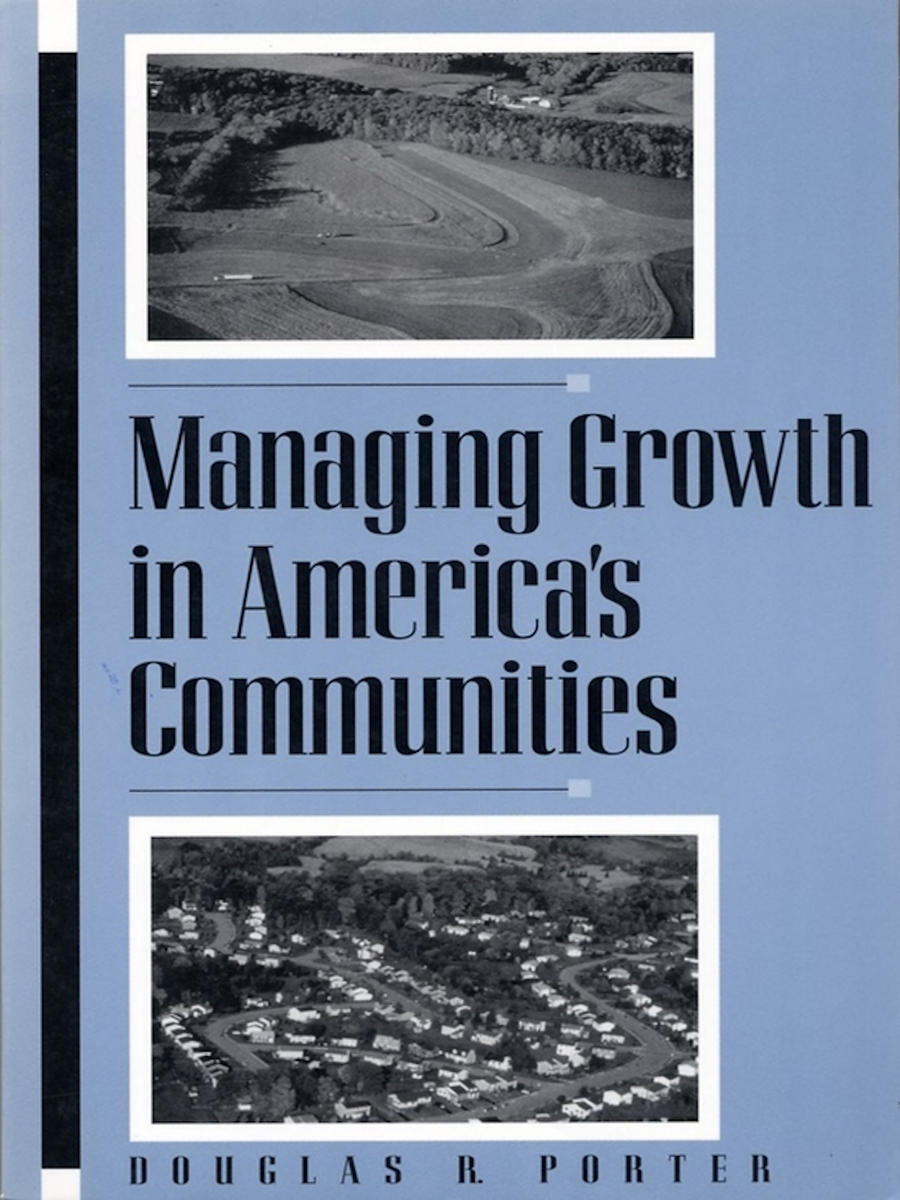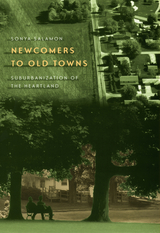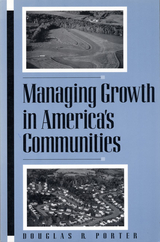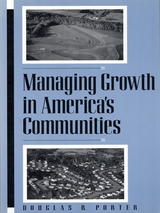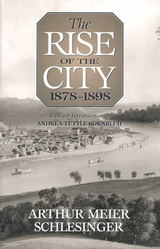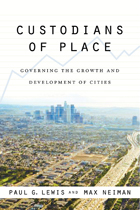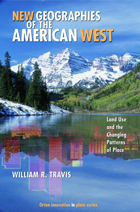Managing Growth in America's Communities: Second Edition
Island Press, 2007
eISBN: 978-1-59726-610-9 | Cloth: 978-1-59726-006-0 | Paper: 978-1-59726-007-7
Library of Congress Classification HT384.U5P67 2008
Dewey Decimal Classification 307.12160973
eISBN: 978-1-59726-610-9 | Cloth: 978-1-59726-006-0 | Paper: 978-1-59726-007-7
Library of Congress Classification HT384.U5P67 2008
Dewey Decimal Classification 307.12160973
ABOUT THIS BOOK | AUTHOR BIOGRAPHY | REVIEWS | TOC | REQUEST ACCESSIBLE FILE
ABOUT THIS BOOK
In this thoroughly revised edition of Managing Growth in America's Communities, readers will learn the principles that guide intelligent planning for communities of any size, grasp the major issues in successfully managing growth, and discover what has actually worked in practice (and where and why). This clearly written book details how American communities have grappled with the challenges of planning for growth and the ways in which they are adapting new ideas about urban design, green building, and conservation. Itdescribes the policies and programs they have implemented, and includes examples from towns and cities throughout the U.S.
“Growth management” is essential today, as communities seek to control the location, impact, character and timing of development in order to balance environmental and economic needs and concerns. Managing Growth in America's Communities addresses all of the key considerations:
The author, who is one of the nation’s leading authorities on managing community growth, provides examples from dozens of communities across the country, as well as state and regional approaches. Brief profiles present overviews of specific problems addressed, techniques utilized, results achieved, and contact information for further research. Informative sidebars offer additional perspectives from experts in growth management, including Robert Lang, Arthur C. Nelson, Erik Meyers, and others.
This new edition has been completely updated by the author. In particular, he considers issues of population growth, eminent domain, and the importance of design, especially “green” design. He also reports on the latest ideas in sustainable development, “smart growth,” neighborhood design, transit-oriented development, and green infrastructure planning. Like its predecessor, the second edition of Managing Growth in America's Communities is essential reading for anyone who is interested in how communities can grow intelligently.
“Growth management” is essential today, as communities seek to control the location, impact, character and timing of development in order to balance environmental and economic needs and concerns. Managing Growth in America's Communities addresses all of the key considerations:
- Establishing public roles in community development;
- Determining locations and character of future development;
- Protecting environmental and natural resources;
- Managing infrastructure development;
- Preserving community character and quality;
- Achieving economic and social goals;
- Respecting property rights concerns.
The author, who is one of the nation’s leading authorities on managing community growth, provides examples from dozens of communities across the country, as well as state and regional approaches. Brief profiles present overviews of specific problems addressed, techniques utilized, results achieved, and contact information for further research. Informative sidebars offer additional perspectives from experts in growth management, including Robert Lang, Arthur C. Nelson, Erik Meyers, and others.
This new edition has been completely updated by the author. In particular, he considers issues of population growth, eminent domain, and the importance of design, especially “green” design. He also reports on the latest ideas in sustainable development, “smart growth,” neighborhood design, transit-oriented development, and green infrastructure planning. Like its predecessor, the second edition of Managing Growth in America's Communities is essential reading for anyone who is interested in how communities can grow intelligently.
See other books on: Cities and towns | City Planning & Urban Development | Community development | Growth | Regional planning
See other titles from Island Press
